Pennsylvania coyotes have been saddled with myths. Get the facts about the elusive animals
For all their luck with deer, turkey and other wild game, there’s one animal in Pennsylvania that’s been mostly able to elude hunters.
Coyotes have a stable population in the Keystone State even though hunters are permitted to pursue them 24 hours a day with no closed season or bag limit.
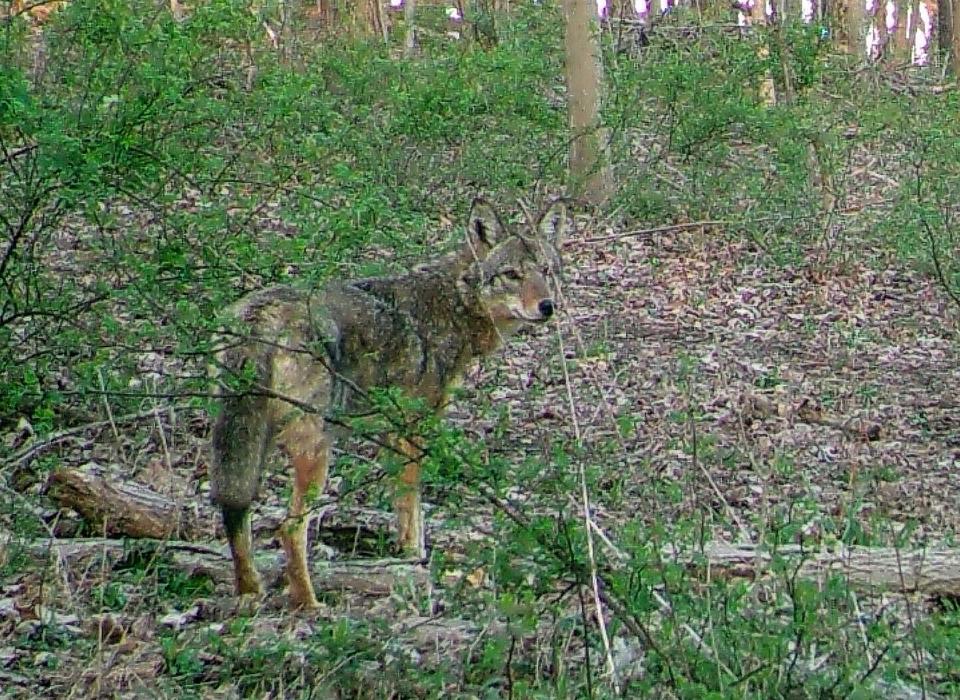
While it’s easy to dislike coyotes because they are predators that will eat everything from a chipmunk and birds to young deer, their ability to survive and sometimes thrive is an incredible accomplishment.
I have about a half-dozen trail cameras in the woods throughout the year. I’m surprised at how many coyote photos I get despite rarely seeing them while hunting or spending time in the woods.
“They’re definitely an incredible animal, that’s for sure,” Thomas Keller, furbearer biologist for the Pennsylvania Game Commission, said in a telephone interview.

He said the open, liberal hunting season for coyotes started appearing in the 1930s and 1940s. “We saw coyotes start to move from the West and move eastward. We had almost two different sub-populations that came into Pennsylvania, and a lot of this comes from good genetic research here within the last 10 to 15 years, but what we see is coyotes make their way to the east and some that make their way across the Great Lake states."
Those that traveled close to 100 years ago from western states into Canada and around the lakes are believed to have been interbred with wolves and are called eastern coyotes. Adults average 45 to 55 pounds.
The other species is the smaller, lighter western coyote.
“The eastern coyote is generally considered what is to be here in the state,” Keller said.
Coyotes can be found in every county of Pennsylvania and they find ways to adapt to every habitat and environment. Some live in mountainous areas while others can be found walking city sidewalks.
The coyote population is difficult to determine though is believed to be stable.
“Unlike deer, bear and turkey, we don’t actually have population estimates on any of the furbearer species, including the coyote," Keller said. "So we generally look at other indices or other long-term trends,” including harvests that can fluctuate with the price for their pelts.
The commission does study and keep track of reported conflicts with coyotes, such as predation on small pets like cats and livestock. “Our predation rates have gone down over the last 10 years, but what has gone up is the rate of people calling just because they saw a coyote,” Keller said.
People have been moving from cities to rural areas, and coyotes are starting to be seen more often in suburban areas. “We know that is happening, particularly in the southeast,” he said.
When people call the agency about a coyote, he said the staff asks about the behavior of the animal. “If it’s a normal behavior, which oftentimes it is, we just let folks know that it’s a wild animal and to keep your distance from it. It’s not there to harm you,” Keller said. In addition, staff members advise homeowners to make sure there isn’t a food source, such as dog food, or trash that might attract wild animals.
“They have this incredible adaptability to live with humans, which is important, so many species can’t. And then, of course, humans continue to develop new areas and they get pushed out,” Keller said.
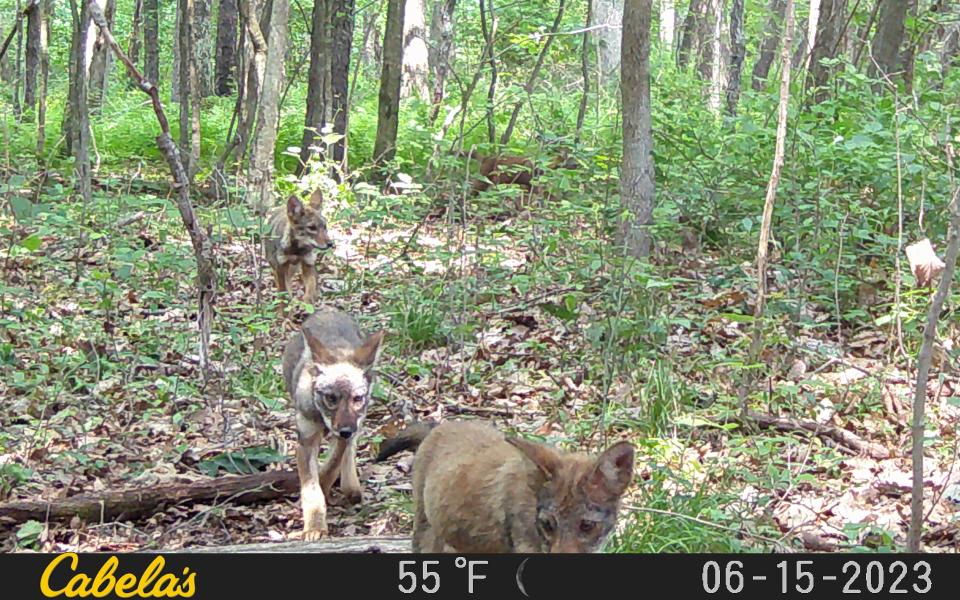
Managing the population
“We certainly have plenty of coyotes here, but you almost never see them,” he said.
Some of the western states have predator control programs to protect livestock where they tried to eradicate coyotes, but Keller said those programs have not had much success.
Researchers also are studying the coyote’s compensatory reproduction abilities. “As you decrease the coyote population, what you’ll see is that population will respond by increasing the size of their litters. You’ll see an increase in survival, you’ll see an increase in breeding females, which is going to put more coyotes on the ground within a population,” he said. Each litter has an average of five to seven pups.
The other thing researchers discovered is coyotes' ability to migrate and disperse throughout an area.
A breeding pair will occupy a territory of 3 to 10 square miles. Removing coyotes from a territory, Keller said, can create a vacuum for other coyotes to enter the area.
“You always have young coyotes looking for a territory to establish. So when that territory would open up, you immediately have these animals come in. Because they have such a large home range, and a large ability to disperse, they have that ability to fill in those gaps,” he said. “Those strategies have really helped them no matter where they are at. Whether it’s a desert in the Midwest or it’s up in the cold, snow of Canada, or here in the Northeast, or in Southeast, where they have hot summers, they just have the unique ability to adapt wherever they are headed.”
He noted coyotes in Chicago have learned to live in the middle of a major city, and it’s happening in Pittsburgh as well.
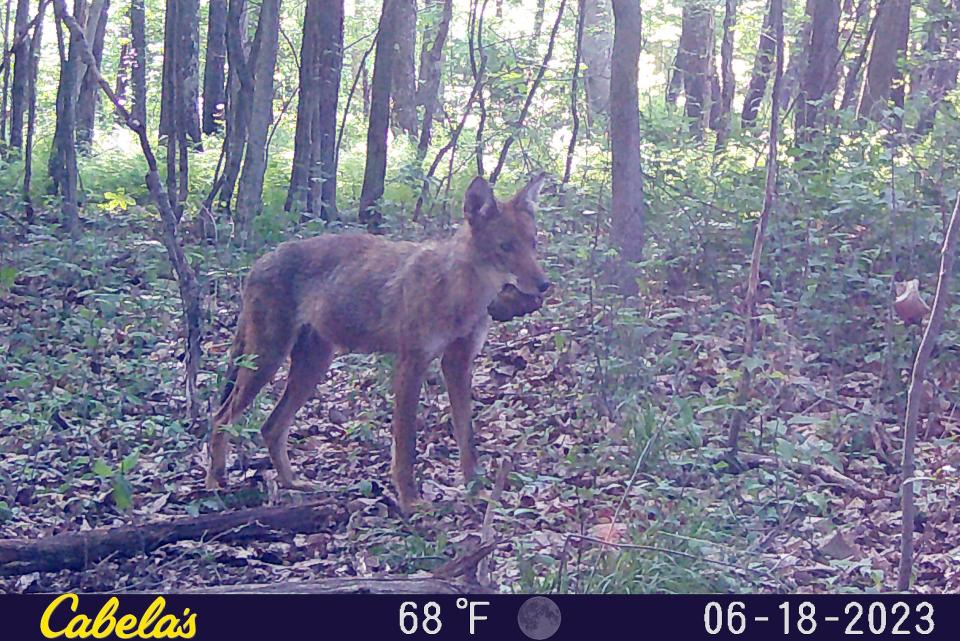
What Pennsylvania coyotes eat
Coyotes are omnivores. Diet studies show they eat deer carrion, small mice, birds and a variety of plant material such as vegetation and seasonal fruits. They also eat insects, small mammals like squirrels, rabbits and groundhogs, and in urban areas they have eaten small pets like feral cats and trash.
Coyotes eat deer that die from disease, vehicle strikes and ones that get away from hunters. They also will kill fawns, especially in the first nine weeks of the deer’s life.
“They are opportunistic with whatever they might come across,” Keller said.
Misconceptions about coyotes
“It’s probably the one species that has more misconceptions and myths surrounding it than just about any other in the state,” Keller said.
The No. 1 misconception: Coyotes were released or reintroduced in Pennsylvania. “But that’s just not the case," Keller said. "We certainly have good evidence tracking that spread of coyotes across the U.S. from the west to the east, and that’s primarily using genetics.”
He said coyotes naturally made their way into Pennsylvania and were not released by any one agency or company.
Another misconception involves coyotes targeting pets and livestock. “In reality, that does happen occasionally, but in reality, most of the time coyotes are not doing that,” Keller said.
When it does happen, it’s usually one particular coyote that should be removed, but not every coyote in that area. “By keeping an active territory there, that prevents more coyotes from coming into the area. It’s more or less removing a problem coyote than it is trying to remove all the coyotes.”
A third misconception is their negative impact on other game populations.
“We just don’t see that," Keller said. "I know there are a lot of assumptions that they are really hard on game populations. Based on what the agency sees in their diet and what they learned from predator studies also including black bears and bobcats, they believe coyotes don’t have a significant impact on whitetail deer populations in Pennsylvania.
Another topic that is often asked about is coydogs, a cross between coyotes and domestic dogs. Keller said it’s rare.
“It’s not something that happens very often. We know that through genetics, but we also know that through basic biology for a coyote," he said. "It’s certainly possible for a coyote to breed with a dog, but what we see is that in the wild, it takes a pair of coyotes to be able to raise a litter. Generally one coyote can’t do that."
Fur trade
People historically would trap or hunt coyotes to make extra money by selling their fur. Today a hunter or trapper would only get about $10 for a quality pelt.
“You have more time invested in it than what it might be worth,” Keller said.
The real value, he said, is in spending time outside and learning about coyotes. Keller is a trapper and coyotes are one of his favorite animals to pursue. “It’s primarily because how difficult it is,” he said.
When killing an animal, he urges hunters and trappers to utilize every part of the coyote. “It does good things for the sport, but it also honors the animal itself,” he said.
The pelts, skull and tail have some value, and Keller uses the meat to create additional trapping bait.
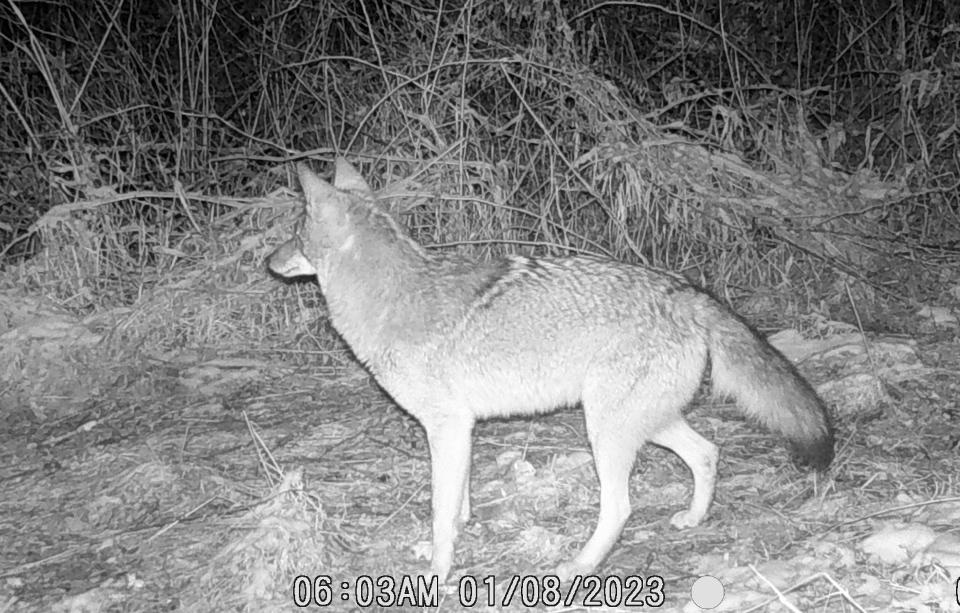
Hunting coyotes
Keller said people are becoming interested in hunting coyotes because of advancements in night scope technology.
Blaine Smith, owner of Juniata Trading Co., a sport shop in Everett, Bedford County, hunted coyotes when he lived in Montana, and has seen some of the wild dogs while living in Pennsylvania since 1988. “I have had a lot of opportunities (in Pennsylvania) but have never taken the shot, mostly because I didn’t want to mess up my deer hunt.”
When it comes to shooting one, he said, “you better be ready when they show up because as soon you move, I swear they hear when your release clicks on your bow, or they hear the safety go off on the gun, and they just disappear. They’re like ghosts.”
People may not realize there are coyotes in their area because they are mostly nocturnal. “You don’t see them much during the day unless you are pushing through the woods," Smith said. "That’s the only times I’ve really seen them in the daytime is when we are pushing through the woods.”
Many people hunt coyotes during the night when they are more active.
What's out there: Bigfoot, mountain lions, and other mythical creatures: PA officials discuss what they know
His son, Hunter Smith, one of the store’s managers, sells different types of night optics that help hunters make ethical shots after the sun sets.
About half the customers want scopes with nighttime optics and others are looking at thermal imaging scopes that display the animal based on its heat profile. “Thermal-wise are a lot more expensive to run as opposed to a night vision scope," Hunter Smith said. "We definitely sell more night vision scopes because they are definitely a cheaper scope to buy for the average hunter. Thermals start out at about $1,000 for the absolute cheapest thermal scope and they go up to $6, $8 to $10,000 if you really wanted to. The difference between the night scope basically is that runs off of infrared light that is invisible to human eyes and supposedly to the eyes of the predator.”
Thermal scopes are self-contained and don’t require an extra light source. Night vision scopes need an infrared light source.
Hunter Smith said people are hunting coyotes because it gives them something to do in the evenings and it can be done mostly year-round.
He also added that a scope isn’t required ― some hunters just shine a red light to see the coyotes coming to their calls ― but you do have to be ready to shoot. “They’re supposed to not be able to pick up on the infrared light which (also) runs the night vision scopes, but the red light, if it’s shining on them enough, they definitely sense there’s a glare hitting them in the eyeballs, so they get educated pretty quick with them.”
Hunter Smith said the coyotes are definitely a challenge as they can leave the scene faster than a person realizes. “Hunting them is one thing, killing them is definitely a whole different ball game.”
Marten reintroduction: Draft reintroduction plan includes about 300 American marten to be released in Pa.
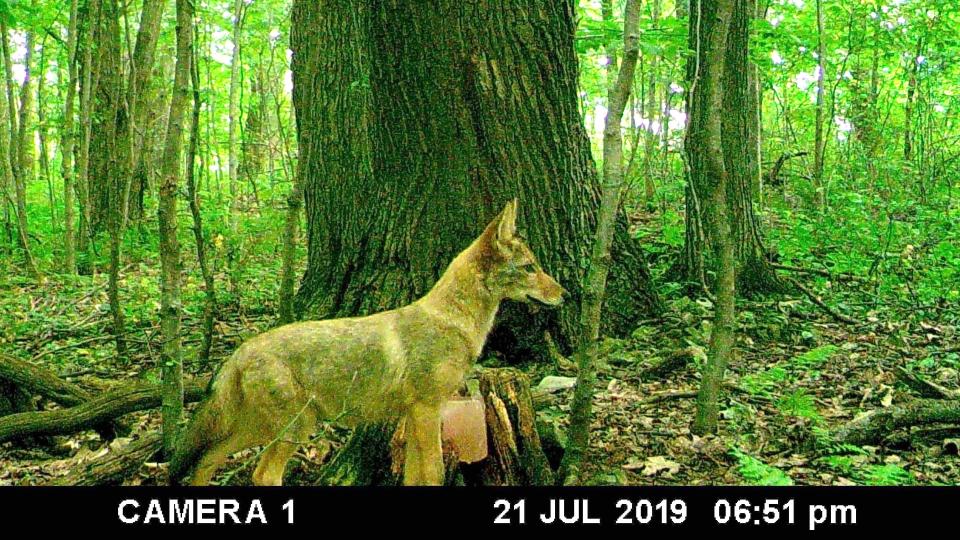
Hunting and trapping seasons
There’s no closed season, including Sundays, to hunt coyotes. Outside of any big game season (deer, bear, elk and turkey), coyotes may be taken with a hunting license or a furtaker license, and without wearing orange. During any big game season, coyotes may be taken while lawfully hunting big game or with a furtaker license.
For trappers, a furtaker license is required and coyotes can be caught Oct. 21-Feb 18. The season involving cable restraints for the predators is Dec. 26-Feb. 18. There are no limits for the number of coyotes a hunter or trapper can harvest.
Even with all the technological advancement and training guides for hunters and trappers, Keller believes coyotes will find a way to survive and deserves our respect. “The last things on Earth will be cockroaches, raccoons and coyotes,” he surmised with a smile.
Brian Whipkey is the outdoors columnist for USA TODAY Network sites in Pennsylvania. Email him at bwhipkey@gannett.com and sign up for our weekly Go Outdoors PA newsletter email on this website's homepage under your login name. Follow him on Facebook @whipkeyoutdoors, X @whipkeyoutdoors and Instagram @whipkeyoutdoors.
This article originally appeared on The Daily American: Myths follow coyotes throughout PA. A biologist offers facts, insights

